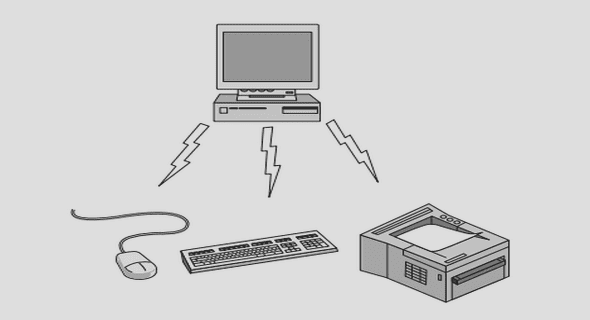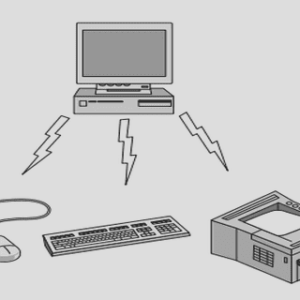(Downloads - 0)
For more info about our services contact : help@bestpfe.com
Table of contents
Chapter 1 INTRODUCTION
1.1 Motivation
1.2 Goal/Aim
1.3 Methodology
Chapter 2 NETWORKS AND PROTOCOLS
2.1 Networks
2.2 The Open System Interconnected Model (OSI)
2.3 TCP/IP Protocol Suite
2.3.1 Link Layer
2.3.1.1 Address Resolution Protocol (ARP)
2.3.1.2 Reverse Address Resolution Protocol (RARP)
2.3.2 Internet Layer
2.3.2.1 Internet Protocol (IP)
2.3.2.2 Internet Control Message Protocol (ICMP)
2.3.2.3 Internet Group Message Protocol (IGMP)
Security Level Protocols
2.3.2.4 Internet Protocol Security (IPSec)
2.3.2.4.1 Protocol Identifier
2.3.2.4.2 Modes of Operation
2.3.3 Transport Layer Protocol
2.3.3.1 Transmission Control Protocol (TCP)
2.3.3.2 User datagram Protocols (UDP)
Security Level Protocols
2.3.3.3 Secure sockets layer (SSL)
2.3.3.4 Transport Layer Security (TLS)
2.3.4 Application Layer Protocol
2.3.4.1 Simple Mail Transfer Protocol (SMTP)
2.3.4.2 File Transfer Protocol (FTP)
Security Level Protocols
2.3.4.3 Telnet
Chapter 3 NETWORK SECURITY THREATS AND VULNERABILITIES
3.1 Security Threats
3.2 Security Vulnerabilities
3.3 Unauthorized Access
3.4 Inappropriate Access of resources
3.5 Disclosure of Data
3.6 Unauthorized Modification
3.7 Disclosure of Traffic
3.8 Spoofing
3.9 Disruption of Network Functions
3.10 Common Threats
3.10.1 Errors and Omissions
3.10.2 Fraud and Theft
3.10.3 Disgruntled Employees
3.10.4 Physical and Infrastructure
3.10.5 Malicious Hackers
3.10.6 Malicious Application Terms
Chapter 4 NETWORK SECURITY ATTACKS
4.1 General Categories of Security Attacks
4.1.1 Reconnaissance Attack
4.1.1.1 Packet Sniffers
4.1.1.1.1 Passive Sniffing
4.1.1.1.2 Active Sniffing
4.1.1.2 Prot Scan & Ping Sweep
4.1.1.3 Internet Information Queries
4.1.2 Access Attack
4.1.2.1 Password Attack
4.1.2.1.1 Types of Password Attack
4.1.2.2 Trust Exploitation
4.1.2.3 Port Redirection or Spoofed ARP Message
4.1.2.4 Man-in-the-Middle Attack
4.1.3 DOS Attacks
4.1.3.1 DDOS
4.1.3.2 Buffer Overflow
4.1.4 Viruses and Other Malicious Program
Chapter 5 SECURITY COUNTERMEASURES TECHNIQUES AND TOOLS
5.1 Security Countermeasures Techniques
5.1.1 Security Policies
5.1.2 Authority of Resources
5.1.3 Detecting Malicious Activity
5.1.4 Mitigating Possible Attacks
5.1.5 Fixing Core Problems
5.2 Security Countermeasures Tools
5.2.1 Encryption
5.2.1.1 Overview
5.2.2 Conventional or Symmetric Encryption
5.2.2.1 Principle
5.2.2.2 Algorithm
5.2.2.3 Key Distributions
5.2.3 Public-key or Asymmetric Encryption
5.2.3.1 Principle
5.2.3.2 Algorithm
5.2.3.3 Key Management
Chapter 6 SECURITY SOLUTIONS
6.1 Applications Level Solutions
6.1.1 Authentication Level
6.1.1.1 Kerberos
6.1.1.2 X.509
6.1.2 E-Mail Level
6.1.2.1 Pretty Good Privacy (PGP)
6.1.2.2 Secure/ Multipurpose Internet Mail Extension (S/MIME)
6.1.3 IP Level
6.1.3.1 Internet Protocols Security (IPSec)
6.1.4 Web Level
6.1.4.1 Secure Sockets Layer/ Transport Layer Security (SSL/TLS)
6.1.4.2 Secure Electronic Transaction (SET)
6.2 System Level Solutions
6.2.1 Intrusion Detection System (IDS)
6.2.2 Intrusion Protection System (IPS)
6.2.3 Antivirus Technique
6.2.4 Firewalls
Chapter 7 SIMULATION / TESTING RESULTS
7.1 Overview
7.2 Goal
7.3 Scenario
7.4 Object Modules
7.5 Applications/Services
7.6 Task Assignments
7.7 Object Modules
7.8 Results
7.8.1 General Network
7.8.2 Firewall Based Network
7.8.3 VPN with Firewall
7.8.4 Bandwidth Utilization
Chapter 8 CONCLUSION AND FUTURE WORK
8.1 Conclusion
8.2 Future Work
REFERENCES



